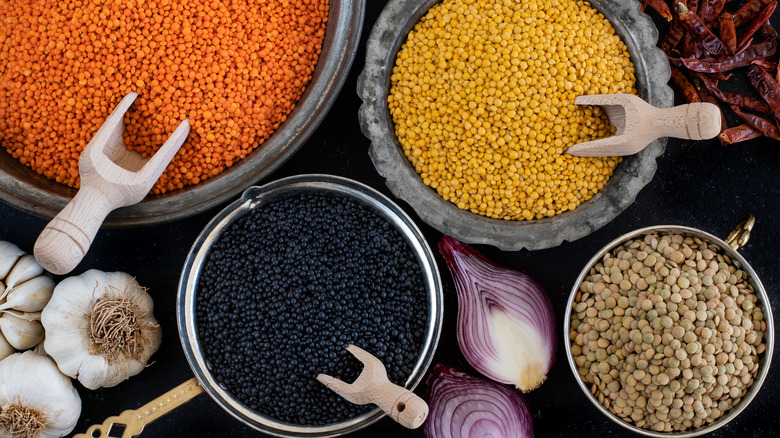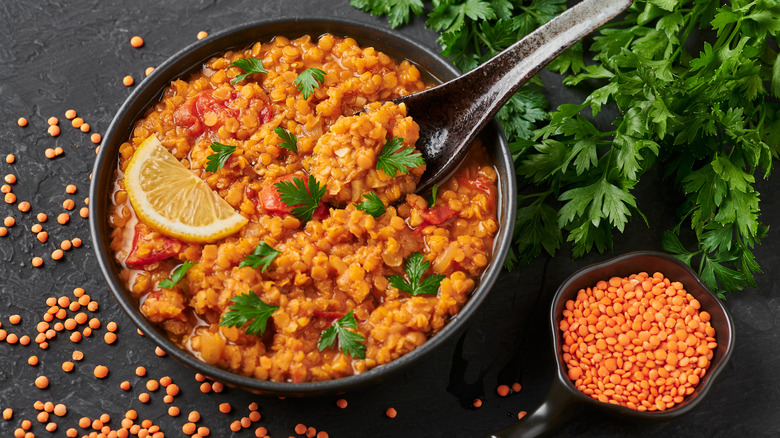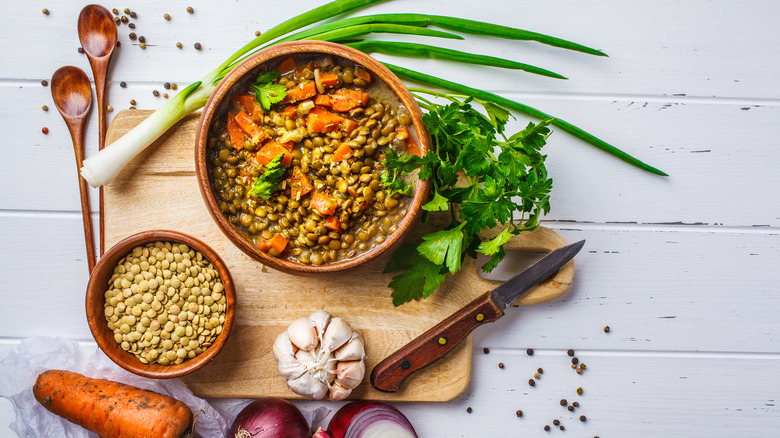The Best Ways To Use The Most Common Lentil Varieties
No food fits the "good things come in small packages" proverb like lentils. Their earthy, nutty flavors and tender textures make the circular superstars a great addition to any recipe. What's more, these tiny, lens-shaped legumes pack a mean nutritional punch. One serving of lentils is bursting with plant-based protein, fiber, folate, iron, and potassium. With the incredible nutritional benefits and delicious flavors lentils have to offer, it's no wonder they're featured in cuisines all over the world.
Another exciting feature of lentils is that they come in a rainbow of colors. As with any legume, each colorful variety has assets that come through best in different types of recipes.
If lentils aren't already in your cooking rotation, the endless varieties may seem daunting to navigate at first. No need to fear, though — there are basic guidelines for working with each variety that can make the lentil cooking process much simpler (and much tastier).
A multipurpose pulse
Cook's Country offers a simple breakdown of some of the most popular lentil types and in which types of dishes each works best. The article focuses on Laird (green), brown, red, and du Puy (French green) lentils, which are the most common types in American grocery stores. While these lentils have similar qualities overall, each variety falls within a spectrum. They can range from tender to firm and from nutty to neutral-flavored when cooked. None of these qualities makes any particular lentil better than any other, but different cooking methods and recipes can optimize each of these qualities best.
Brown and Laird lentils, which are both mild in flavor and soft in texture, are the more "all-purpose" of the common lentil types. Du Puy lentils, meanwhile, have a more distinct "peppery and complex flavor" and remain the most firm in the cooking process, making them great choice in dishes that center lentils as the leading actor.
Red lentils are the most deceptive of the bunch, as they are actually brown or green lentils in disguise. Their bright red hue comes from the lentils being skinned and split open. This pre-cooking prep process makes the little reds break down easily and make a creamier addition to stews and soups than their less-processed predecessors.
Lentils are worth learning
If the culinary versatility and unbeatable nutritional value have yet to sell you on the magic of lentils, perhaps their affordability will. Lentils are incredibly cheap; a dried and shelled bag at a typical grocery store costs between $0.24 and $0.29 per pound in the United States. Plus, they're one of those pantry items that last for ages — approximately 2-3 years in cool, dry conditions. These modest little round disks are living proof that healthy foods don't have to equate to unhealthy spending habits.
Thanks to their low cost, trying to cook with an unfamiliar lentil variety is as low-risk, high-reward of an endeavor as they come ... as long as you utilize the best properties of each kind of lentil to your advantage. Whether they appear in a comforting lentil soup, a crunchy lentil salad, or a creamy lentil dal, lentils are sure to shine.


